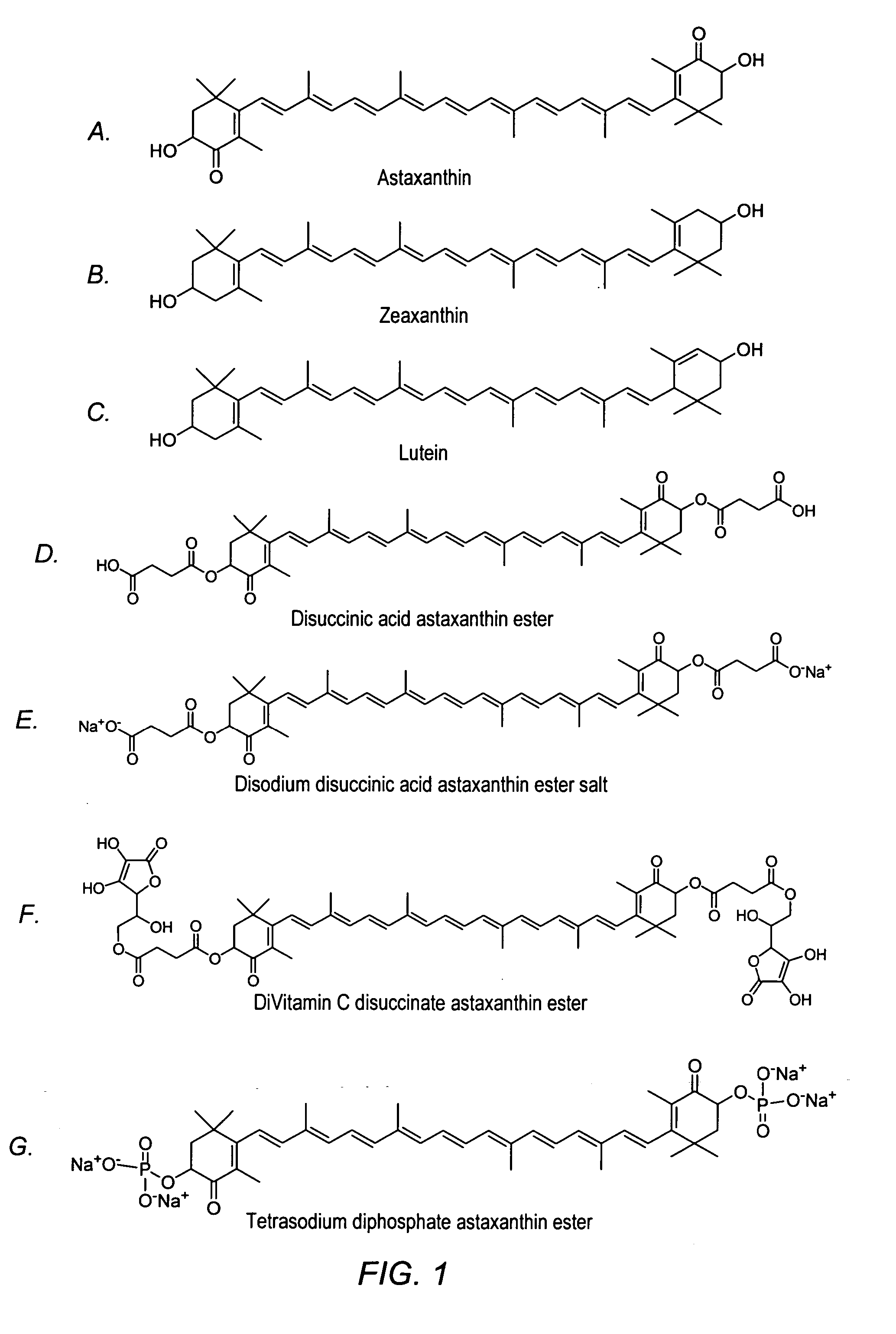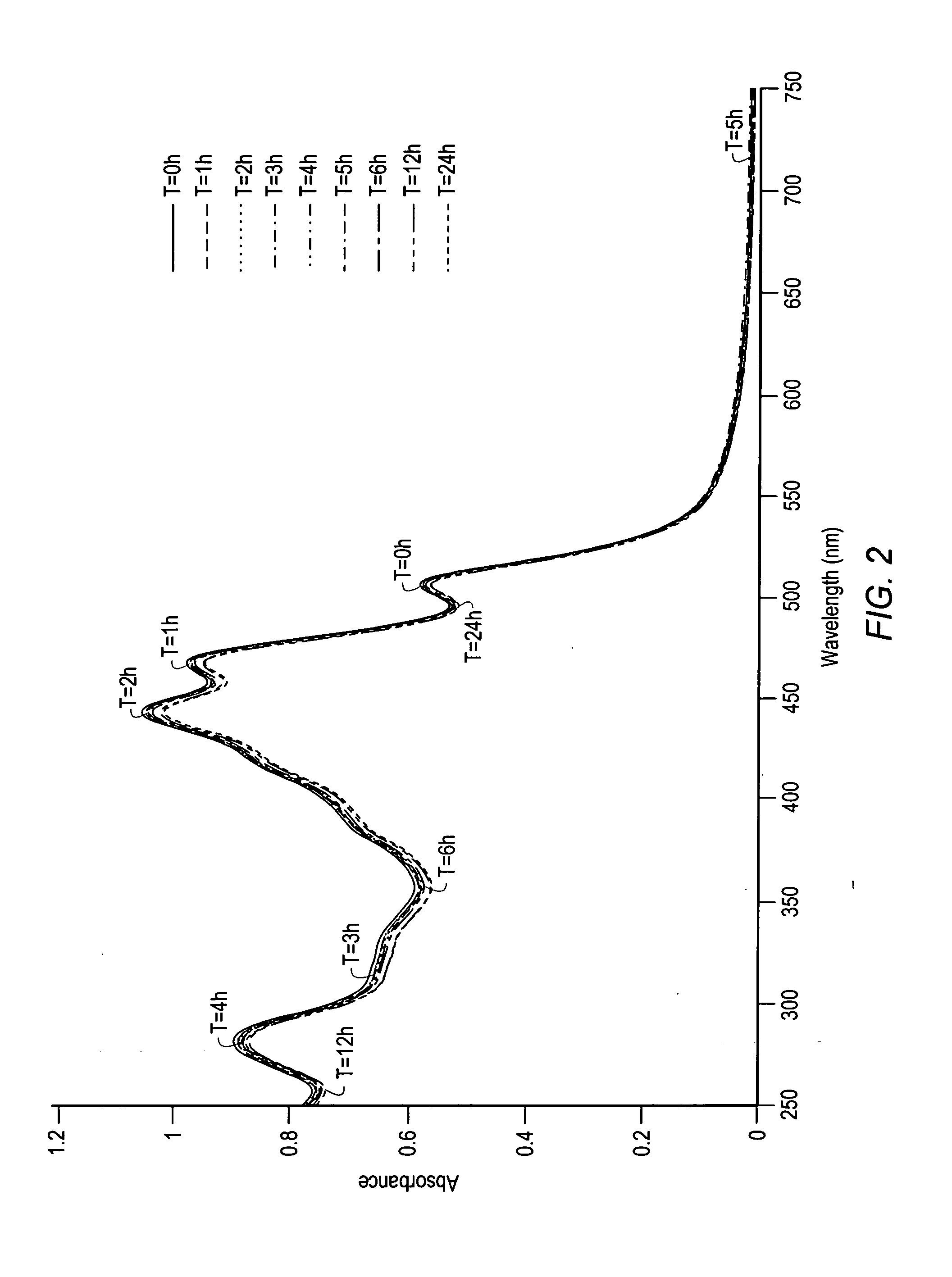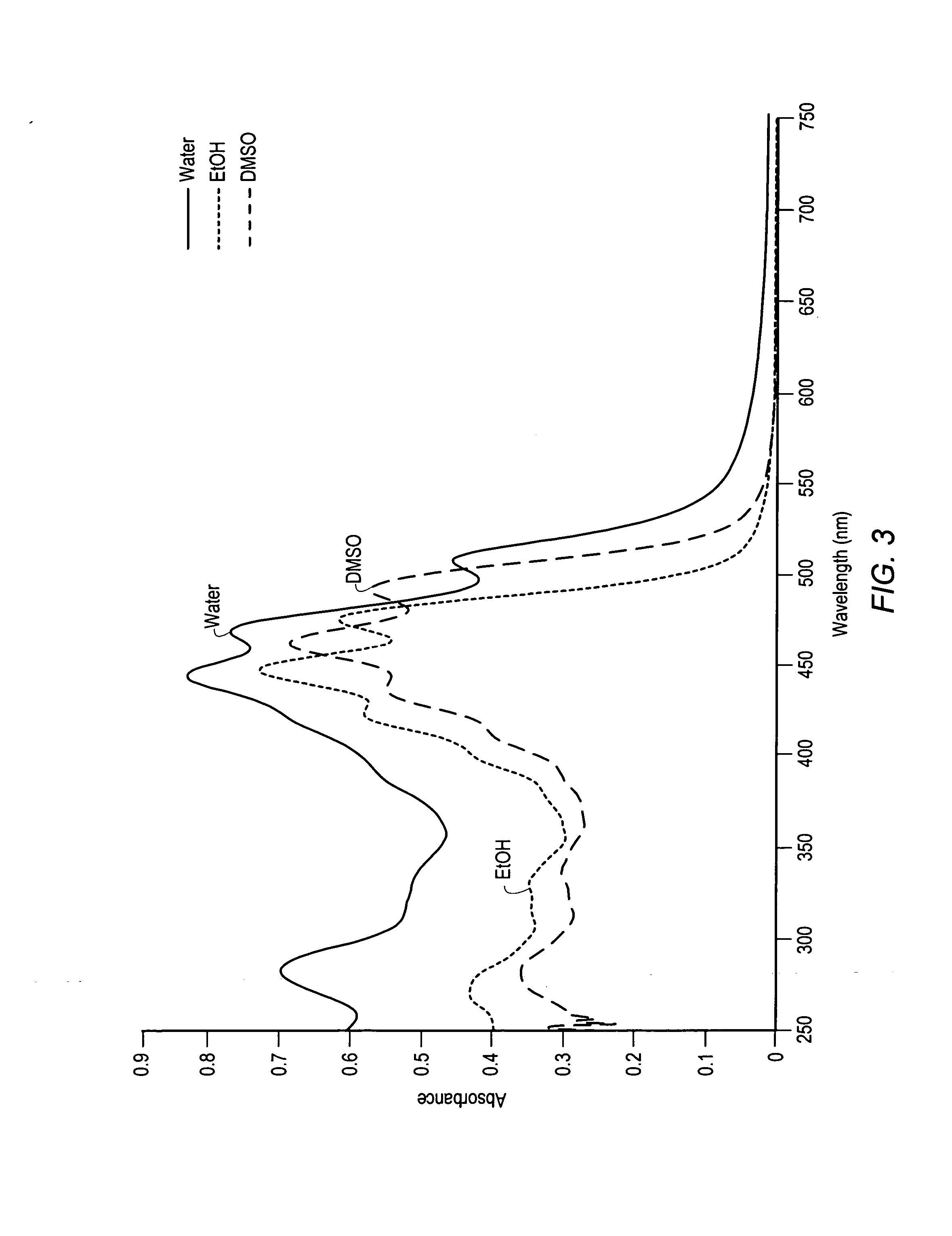Carotenoids, carotenoid analogs, or carotenoid derivatives for the treatment of visual disabilities
a technology of carotenoid analogs and carotenoids, applied in the field of medical and synthetic chemistry, can solve the problems of increased risk of armd, reduced lutein and zeaxanthin (macular pigment) in diet, serum or retina, and reduced lutein and zeaxanthin (macular pigment) levels, so as to inhibit and/or improve the occurrence of diseases
- Summary
- Abstract
- Description
- Claims
- Application Information
AI Technical Summary
Benefits of technology
Problems solved by technology
Method used
Image
Examples
examples
[0216] Having now described the invention, the same will be more readily understood through reference to the following example(s), which are provided by way of illustration, and are not intended to be limiting of the present invention.
General.
[0217] Natural source lutein (90%) was obtained from ChemPacific, Inc. (Baltimore, Md.) as a red-orange solid and was purified by dissolving in a minimal volume of CH2Cl2, passed through a 0.45 μm filter, and concentrated in vacuo. This process was repeated three times. All other reagents and solvents used were purchased from Acros (New Jersey, USA) and were used without further purification. All reactions were performed under N2 atmosphere. All flash chromatographic purifications were performed on Natland International Corporation 230-400 mesh silica gel using the indicated solvents. LC / MS (APCI) was recorded on an Agilent 1100 LC / MSD VL system; column: Zorbax Eclipse XDB-C18 Rapid Resolution (4.6×75 mm, 3.5 μm); temperature: 25° C.; starti...
PUM
| Property | Measurement | Unit |
|---|---|---|
| Molecular weight | aaaaa | aaaaa |
| temperature | aaaaa | aaaaa |
| color temperature | aaaaa | aaaaa |
Abstract
Description
Claims
Application Information
 Login to View More
Login to View More - R&D
- Intellectual Property
- Life Sciences
- Materials
- Tech Scout
- Unparalleled Data Quality
- Higher Quality Content
- 60% Fewer Hallucinations
Browse by: Latest US Patents, China's latest patents, Technical Efficacy Thesaurus, Application Domain, Technology Topic, Popular Technical Reports.
© 2025 PatSnap. All rights reserved.Legal|Privacy policy|Modern Slavery Act Transparency Statement|Sitemap|About US| Contact US: help@patsnap.com



